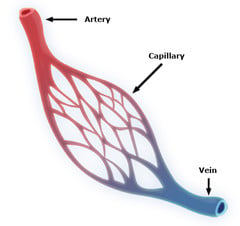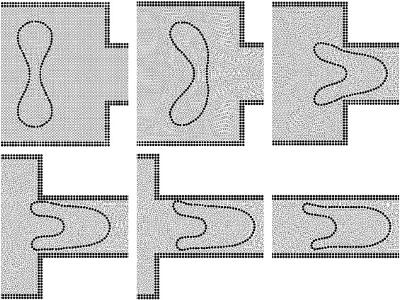We all know omega-3 is great for health, but it’s also a huge help for those in serious training, or for anyone looking to get fitter and stronger. If you’re serious about getting in shape, read this article until the very end. Because today, we’ll take a look at all the benefits of taking omega-3 fish oil for working out!
How Omega-3 fish oil helps with exercise
We are now starting to fully understand just how beneficial taking an omega-3 supplement can be for sports performance and recovery. Let’s start with the first benefit of taking fish oil for working out…
Benefit #1: Omega-3 fish oil can reduce cortisol levels when working out
Exercise can be great and make you feel amazing but there is one drawback that can leave you feeling burnt out instead of more alive: the effects of cortisol. Produced in the adrenal gland, cortisol is a stress hormone that is released in response to low blood sugar and mental or physical stress.
A strenuous workout, or the stress of pushing the body physically when it’s not accustomed to it can trigger a cortisol release. While cortisol is a good thing because it helps us handle stress and regulates inflammation, it can also be damaging to the body when it’s released too often. It counteracts the benefits of exercising by hindering muscle growth and leading to belly fat and can leave us feeling tired and wired.
Omega-3 fish oil supplementation has been shown to reduce cortisol levels after working out. After six weeks of taking an omega-3 supplement, a group of study participants had lowered levels of cortisol. They were also observed to have reduced the amount of fat on their bodies while their levels of lean muscle increased (1).
In a 2011 study, omega-3 also was observed to stimulate muscle protein synthesis. This contributes to Omega-3’s muscle growth ability. When you exercise or lift weights, you’re actually damaging your muscles by creating small tears in the muscle fibers. It’s during the resting period after the exercise that your muscles get bigger and stronger through the healing process. By stimulating muscle protein synthesis, omega-3 offers a boost in healing and muscle growth during that period (2).

Benefit #2: Omega-3 helps with DOMS post-workout
Not only can omega-3 fish oil heighten the benefits of working out, but it also helps manage the unpleasant aftermath of sore and stiff muscles. Delayed-onset muscle soreness, or DOMS, post-workout is common in those who are just starting to get into an exercise routine, those who do strength training, or anyone who’s pushed themselves really hard.
The soreness and reduced range of motion is often caused by inflammation that occurs when the muscles are damaged. As an anti-inflammatory, omega-3 can lessen the severity of the inflammation and reduce the pain. By also increasing the blood flow to the damage muscles, it helps speed up the recovery process and allows you to bounce back quicker.
These fish oil working out benefits were displayed in a 2009 study that focused on the effects of omega-3 being used to counteract DOMS. Compared to the study group that was not given omega-3, the group given omega-3 supplementation had reduced pain and increased range of motion at 24 to 48 hours after the workout when the symptoms of DOMS are most strongly felt (3). The reduction of inflammation and pain was also observed in a second study where the participants were given 3000mg dose of omega-3 daily (4).
Benefit #3: Omega-3 supplementation increases muscle mass and strength
Several studies have shown growth of muscle protein after omega-3 fish oil supplementation, firstly in animals (5-7), and then in humans (8-13). It seems that this omega-3 muscle growth occurs for 2 reasons.
The first is that omega-3 fatty acids, and specifically EPA and DHA, stimulate an anabolic response. The second is that as the omega-3 fatty acids are incorporated into cell membranes in the body, the greater fluidity and insulin sensitivity that they create allow more anabolic nutrients and amino acids to enter the muscle cells from the circulation, which naturally leads to greater muscle growth.
Omega-3’s muscle building or anabolic effects come from its ability to switch on the mTOR signaling pathway (10-14). mTOR is effectively the body’s protein sensing system. It controls cell growth, metabolism, protein synthesis, and DNA transcription based on the environment it senses in the body.
This means mTor can get turned on, or off, depending on different physiological factors, such as the availability of nutrients, the body’s biochemistry, stress, as well as hormone, cellular energy, and oxygen levels. Because of this, mTOR acts like a master switch for skeletal muscle growth (15-16). So, if we can turn on mTOR, we can grow more muscle and develop greater strength (17-19).

Benefit #4: Omega-3 prevents muscle breakdown
Muscle is in a constant state of change, and is being continually being broken down, repaired, and new muscle cells being synthesized. This process of ‘anabolism’ and ‘catabolism’ is generally balanced. However, when we focus on building strength through training and increasing our protein intake, we’re trying to create a net positive synthesis balance, where more protein is made than is broken down. Of course, during times of injury, illness, and prolonged inactivity, catabolism is often greater than anabolism, and we can lose muscle mass.
The system for catabolism, or breaking down of proteins, is governed by the ubiquitin proteasome system. This system seeks out and breaks down faulty and damaged proteins, or other proteins that are not needed, or are otherwise surplus to requirements. It maintains homeostasis, by ensuring we have the right levels of proteins, in the right amounts, at the right time.
When we take a break from training, or generally become more inactive, our need for muscle mass decreases, and so the ubiquitin proteasome pathway is ‘turned up’ and we tend to lose muscle mass. Also, the system can start to malfunction and become more active due to aging, infectious diseases, cancers, as well as degenerative and inflammatory conditions like Alzheimer’s, arthritis, diabetes as well as other wasting conditions.
However, omega-3 supplementation, and specifically the omega-3 fatty acid EPA, has been shown to turn down or down-regulate the ubiquitin proteasome pathway, so there is less muscle wasting (20-23).
Another way omega-3 may have anti-catabolic effects is through its effects on stress hormones. Elevated stress hormones such as cortisol, adrenaline and noradrenaline can cause muscle breakdown (24), and taking Omega-3 supplements has been shown to reduce cortisol, catecholamine, and adrenal activation (8, 24).
Benefit #5: It can help increase workout tolerance by improving blood flow
Maintaining energy and avoiding fatigue during a workout is also a challenge for everyone – from those just starting an exercise regime to Olympic athletes. Fatigue gets us all in the end, however, omega-3 helps in this area by increasing blood flow and therefore oxygen to the working muscles.
One of the major reasons for fatigue is the capacity of the body to get blood to the muscles and then back to the heart again. So, if we can increase oxygen and blood flow to the muscles during exercise, we can increase performance.
There are different ways omega-3 boosts performance.
*It improves blood flow by letting the arteries widen

Once in the cell membranes, the first way omega-3 boosts performance is by improving blood flow through its action on the walls of the arteries. A 2007 study found that omega-3 can cause the endothelium of the arteries to vasodilate (widen).
The endothelium is a simple layer of cells that lines the whole interior wall of the blood vessels. It’s a very active organ constantly adjusting to maintain homeostasis and stress will often cause it to constrict. However, the study showed that omega-3 caused the arterial endothelium to vasodilate which led to increased blood flow (25).
*Omega-3 is a powerful anti-inflammatory
The second way omega-3 improves blood flow is through its anti-inflammatory properties. Both omega-3 and omega-6 produce hormones called eicosanoids, which can have inflammatory and anti-inflammatory properties. However, when the balance of omega-6 to omega-3 changes to too much omega-6, as is very common with most people’s diets today, too many inflammatory eicosanoids are produced. This is because both omega-6 and omega-3 compete for the use of the same enzyme delta-6 desaturase.
The inflammatory hormones produced by the excess omega-6, thromboxane (A2) and prostaglandin (E2), cause vasoconstriction in the arteries. However, omega-3 interacts with the cyclooxygenase enzyme which produces thromboxane (A2) and prostaglandin (E2) from excess omega-6 to reduce these hormone levels. This in turn reduces platelet aggregation (blood cell stickiness), vasodilates the blood vessels, and improves circulation (26-28).
*It promotes red blood cell deformability
Thirdly, another key factor limiting blood and oxygen flow to the muscles is when the erythrocytes, which are the main type of red blood cell (RBC) in the body, become stiffer during exercise (29), which reduces oxygen circulation (30). Erythrocytes are cells that are rich in hemoglobin, an iron-containing molecule that binds oxygen and is responsible for the red color of blood.
The reason this is a problem is that the erythrocytes have to pass from the arteries to the capillary network. This helps them deliver oxygen and remove the waste carbon dioxide from the body’s tissues such as the exercising muscles. The capillaries are the smallest of the body’s blood vessels and form a microcirculation which receives blood from the arteries and then passes it out to the veins to be recirculated to the heart.
However, the problem is that the erythrocytes are too big to naturally fit through the capillary network in their normal shape. Capillaries need to be extremely narrow and maintain a high osmotic pressure to ensure efficient diffusion and exchange between the blood that enters them and the surrounding tissues.
Because of this, the cell membrane of the erythrocyte which has a special structure composed of proteins and lipids must remain flexible. This flexibility allows the cell to ‘deform’ itself to fit through the capillaries. In other words, the membrane flexibility of the erythrocyte allows the cell to squeeze itself through a more narrow capillary. A diagram of an erythrocyte doing this is pictured below.

From Hosseini SM, Feng JJ. A particle-based model for the transport of erythrocytes in capillaries, 2009 (31).
This red blood cell deformability is absolutely vital to healthy physiological functioning. The lack of RBC deformability is associated with a large range of health problems such as sickle cell anemia, as well as an increase in blood viscosity and vascular resistance.
There have been a number of studies that have shown that supplementation with omega-3 improves the deformability of RBC’s (32, 33). And the stiffening of the erythrocytes during exercise has been attributed to the extra free radical production during exercise which damages the lipid membranes of the RBC’s (34). Therefore, the reduced lipid oxidation and the increased oxygen and nutrient delivery to the muscles from improved RBC deformability by omega-3 fish oil can enhance working out and athletic performance.
Omega-3 for athletes – what do studies say?
A study conducted at the University of Toronto and published in the Journal of the International Society of Sports Nutrition has found that in highly trained athletes supplementation with omega-3 fatty acids can increase athletic performance (35).
This study is the first to directly measure the effect of omega-3 fish oil on working out, athletic performance, and neuromuscular function. The authors studied 31 men who had been competing in summer Olympic sports for at least 2 years and for more than 12 hours per week. The sports required good strength endurance and endurance (e.g. rowing, sailing, triathlon, running).
None of the athletes in the study were taking omega-3 or consuming over 3 portions of oily fish per week, and they each received 1.1 grams of omega-3 supplementation for 21 days. The results showed significant improvements in neuromuscular activation and anaerobic capacity for the athletes supplemented with omega-3.
However, with this test the authors found no significant difference between the omega-3 supplemented group and the control. Despite this, the authors noted in their discussion at the end of the study that previous research had shown a significant increase in MVC with omega-3 supplement (MVC stands for Maximal Voluntary Isometric Contraction, a standardized method for measuring muscle strength). The difference being that the other research study had subjects taking omega-3 for 90 days at 2 grams per day (36).
They went on to suggest that the 21 days of omega-3 used in this study was probably not long enough to see an increase in each athlete’s maximum force. Other research has also found that it can actually take up to 10-12 weeks of supplementation with omega-3 for the DHA to fully integrate into the inner cell membranes (37).
How much fish oil to take for working out?
To gain the main benefits from omega-3 supplementation and increased red blood cell deformability, we recommend supplementing for at least 6 weeks and ideally longer. This allows the omega-3 to be incorporated in the blood cell membranes. This is because another study found no improvement in RBC deformability after supplementing with fish oil for only 3 weeks (18).
Based on these findings, we’d strongly suggest that you supplement with omega-3 for at least 10 weeks to gain the full performance improvements, ideally with a dose of 2 grams EPA/DHA or more per day.
When it comes to taking omega-3 fish oil for working out, there are a lot of documented benefits. It prevents cortisol from hindering muscle growth and producing fat, it helps keep you energized, it supports muscle growth, and it cuts down on soreness. Omega-3 is just as useful for exercise as any machine or set of weights and can help you maintain a healthy exercise routine.
💬 Something on your mind? Share your thoughts in the comments. We love hearing from curious minds.
📩 And while you’re here, join our newsletter for more smart stuff (and secret perks)!
References:
[1] Noreen, Eric E., et al. “Effects of Supplemental Fish Oil on Resting Metabolic Rate, Body Composition, and Salivary Cortisol in Healthy Adults.” Journal of the International Society of Sports Nutrition, vol. 7, no. 1, 2010. Crossref, doi:10.1186/1550-2783-7-31.
[2] Smith, Gordon I et al. “Omega-3 polyunsaturated fatty acids augment the muscle protein anabolic response to hyperinsulinaemia-hyperaminoacidaemia in healthy young and middle-aged men and women.” Clinical science (London, England : 1979) vol. 121,6 (2011): 267-78. doi:10.1042/CS20100597
[3] Tartibian, Bakhtiar, et al. “The Effects of Ingestion of Omega-3 Fatty Acids on Perceived Pain and External Symptoms of Delayed Onset Muscle Soreness in Untrained Men.” Clinical Journal of Sport Medicine, vol. 19, no. 2, 2009, pp. 115–19. Crossref, doi:10.1097/jsm.0b013e31819b51b3.
[4] Jouris, Kelly B et al. “The Effect of Omega-3 Fatty Acid Supplementation on the Inflammatory Response to eccentric strength exercise.” Journal of sports science & medicine vol. 10,3 432-8. 1 Sep. 2011
[5] Alexander J.W., H.Saito, O.Trocki, C.K.Ogle (1986) The importance of lipid type in the diet after burn injury. Ann.Surg. 204:1-8.
[6] Bergeron K., P.Julien, T.A.Davis, A.Myre, M.C.Thivierge (2007). Long-chain n-3 fatty acids enhance neonatal insulinregulated protein metabolism in piglets by differentially altering muscle lipid composition. J.Lipid.Res. 48:2396-2410.
[7] Gingras A.A., P.J.White, P.Y.Chouinard, P.Julien, T.A. Davis, L.Dombrowski, Y.Couture, P.Dubreuil, A.Myre, K.Bergeron, A.Marette, M.C.Thivierge (2007) Long-chain omega-3 fatty acids regulate bovine whole-body protein metabolism by promoting muscle insulin signalling to the Akt-mTOR-S6K1 pathway and insulin sensitivity. J.Physiol. 579:269-284.
[8] Noreen E.E., M.J.Sass, M.L.Crowe, V.A.Pabon, J.Brandauer, L.K.Averill (2010) Effects of supplemental fish oil on resting metabolic rate, body composition, and salivary cortisol in healthy adults. J.Int.Soc.Sports Nutr. 8:7-31.
[9] Ryan A.M., J.V.Reynolds, L.Healy, M.Byrne, J.Moore, N.Brannelly, A.McHug, D.McCormack, P.Flood (2009) Enteral nutrition enriched with eicosapentaenoic acid (EPA) preserves lean body mass following esophageal cancer surgery: results of a double-blinded randomized controlled trial. Ann. Surg. 249:355-363.
[10] Smith G.I., P.Atherton, D.N.Reeds, B.S.Mohammed, D.Rankin, M.J.Rennie, B.Mittendorfer (2010) Dietary omega- 3 fatty acid supplementation increases the rate of muscle protein synthesis in older adults: a randomized controlled trial. Am.J.Clin.Nutr.
[11] Gordon I. Smith, Philip Atherton, Dominic N. Reeds, B. Selma Mohammed, Debbie Rankin, Michael J. Rennie, and Bettina Mittendorfer. Omega-3 polyunsaturated fatty acids augment the muscle protein anabolic response to hyperaminoacidemia-hyperinsulinemia in healthy young and middle aged men and women. Clin Sci (Lond). 2011 Sep; 121(6): 267–278.
[12] Di Girolamo FG1, Situlin R, Mazzucco S, Valentini R, Toigo G, Biolo G. Omega-3 fatty acids and protein metabolism: enhancement of anabolic interventions for sarcopenia. Curr Opin Clin Nutr Metab Care. 2014 Mar;17(2):145-50.
[13] McDonald C1, Bauer J, Capra S. Omega-3 fatty acids and changes in LBM: alone or in synergy for better muscle health? Can J Physiol Pharmacol 2013 Jun;91(6):459-68.
[14] Smith, G.I., et al., Omega-3 polyunsaturated fatty acids augment the muscle protein anabolic response to hyperinsulinaemia-hyperaminoacidaemia in healthy young and middle-aged men and women. Clin Sci (Lond), 2011. 121(6): p. 267-78.
[15] Bodine, S.C., T.N.Stitt, M.Gonzalez, W.O.Kline, G.L. Stover, R.Bauerlein, E.Zlotchenko, A.Scrimgeour, J.C.Lawrence, D.J.Glass, G.D.Yancopoulos (2001) Akt/mTOR pathway is a crucial regulator of skeletal muscle hypertrophy and can prevent muscle atrophy in vivo. Nat.Cell.Biol. 3:1014–1019
[16] Thomas, G., M.N.Hall (1997) TOR signaling and control of cell growth. Curr.Opin.Cell Biol. 9:782-787.
[17] Bodine, S.C., et al., Akt/mTOR pathway is a crucial regulator of skeletal muscle hypertrophy and can prevent muscle atrophy in vivo. Nat Cell Biol, 2001. 3(11): p. 1014-9.
[18] Rommel, C., et al., Mediation of IGF-1-induced skeletal myotube hypertrophy by PI(3)K/Akt/mTOR and PI(3)K/Akt/GSK3 pathways. Nat Cell Biol, 2001. 3(11): p. 1009-13.
[19] Baar, K. and K. Esser, Phosphorylation of p70(S6k) correlates with increased skeletal muscle mass following resistance exercise. Am J Physiol, 1999. 276(1 Pt 1): p. C120-7.
[20] Whitehouse A.S., H.J.Smith, J.L.Drake, M.J.Tisdale (2001) Mechanism of attenuation of skeletal muscle protein catabolism in cancer cachexia by eicosapentaenoic acid. Cancer Res. 61:3604-3609.
[21] Whitehouse A.S., M.J.Tisdale (2001) Downregulation of ubiquitin-dependent proteolysis by eicosapentaenoic acid in acute starvation. Biochem.Biophys.Res. 285:598-602.
[22] Ross, J.A., A.G. Moses, and K.C. Fearon, The anti-catabolic effects of n-3 fatty acids. Curr Opin Clin Nutr Metab Care, 1999. 2(3): p. 219-26.
[23] Smith, H.J., J. Khal, and M.J. Tisdale, Downregulation of ubiquitin-dependent protein degradation in murine myotubes during hyperthermia by eicosapentaenoic acid. Biochem Biophys Res Commun, 2005. 332(1): p. 83-8.
[24] Delarue J, Matzinger O, Binnert C, Schneiter P, Chioléro R, Tappy L. Fish oil prevents the adrenal activation elicited by mental stress in healthy men. Diabetes Metab. 2003 Jun;29(3):289-95.
[25] Hill A.M., J.D.Buckley, K.J.Murphy, P.R.C.Howe (2007) Combining fish-oil supplements with regular aerobic exercise improves body composition and cardiovascular disease risk factors. Am.J.Clin.Nutr. 85:1267-1274.
[26] Hu, F.B., L.Bronner, W.C.Willett, M.J.Stampfer, K.M.Rexrode, C.M.Albert, J.E.Manson (2002) Fish and omega-3 fatty acid intake and risk of coronary heart disease in women. JAMA 287:1815-1821.
[27] Trebble T.M., S.A.Wootton, E.A.Miles (2003) Prostaglandin E2 production and T-cell function after fish-oil supplementation: response to antioxidant co-supplementation. Am.J.Clin.Nutr. 78:376-382.
[28] Robinson J.G., N.J.Stone (2006) Antiatherosclerotic and antithrombotic effects of omega-3 fatty acids. Am.J.Cardiol. 98:39i-49i.
[29] Galea G., R.J.L.Davidson (1985) Hemorrheology of marathon running. Int.J.Sports.Med. 6:136-138.
[30] Suzukawa M., M.Abbey, P.R.Howe, P.J.Nestel (1995) Effects of fish oil fatty acids on low density lipoprotein size, oxidizability, and uptake by macrophages. J.Lipid Res. 36:473-484.
[31] Hosseini SM, Feng JJ. A particle-based model for the transport of erythrocytes in capillaries. Chemical Engineering Science 2009; 64:4488-97.
[32] Cartwright I. J., A.G.Pockley, J.H.Galloway, M.Greaves, F.E.Preston (1985) The effects of dietary ω-3 polyunsaturated fatty acids on erythrocyte membrane phospholipids, erythrocyte deformability and blood viscosity in healthy volunteers. Atherosclerosis 55:267-281.
[33] Terano T., A.Hirai, T.Hamazaki, S.Kobayashi, T.Fujita, Y.Tamura, A.Kumagai (1983) Effect of oral administration of highly purified eicosapentaenoic acid on platelet function, blood viscosity and red cell deformability in healthy human subjects. Atherosclerosis 46:321-331.
[34] Szygula Z. (1990) Erythrocytic system under the influence of physical exercise and training. Sports Med. 10:181-197.
[35] Evan J. H. Lewis, Peter W. Radonic, Thomas M. S. Wolever and Greg D. Wells. 21 days of mammalian omega-3 fatty acid supplementation improves aspects of neuromuscular function and performance in male athletes compared to olive oil placebo. Journal of the International Society of Sports Nutrition 2015, 12:28.
[36] Rodacki C, Rodacki A, Pereira G, Naliwaiko K, Coelho I, Pequito D et al.. Fish-oil supplemenation enhances the effects of strength training in elderly women. Am J Clin Nutr. 2012; 95(2):428-36.
[37] Stasi DD, Bernasconi R, Marchioli R, et al. 2004. Early modifications of fatty acid composition in plasma phospholipids, platelets and mononucleates of healthy volunteers after low doses of n3 polyunsaturated fatty acids. Eur J Clin Pharmacol 60: 183–190.





